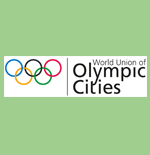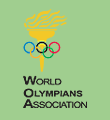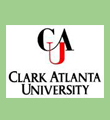Finally Murray SANFORD and myself get to be tourists for two days and discover some of these wonderful sites everybody kept on talking about during the Games! We were so busy with all the ATLANTA DITC functions, the competitions venues we had to go to, promoting DeKalb County as the Premiere Sports Destination in Georgia and promoting the ATLANTA DITC as the best training place in preparation for the 2010 Singapore Youth Olympic Games and the 2010 London Games, planning the ATLANTA DITC-ATLANTA LEGACY House in Vancouver and London, and also meeting 10 International Sports Federations and 36 National Olympic Committees representatives, that during the Olympic Games and even after (since we were busy through the 27th with BOCOG and the City of Beijing) there was really not one minute left for us to take off to sightsee some of these landmarks in and around Beijing.
THE SUMMER PALACE
It is the largest imperial garden in the world, truly a museum of classical Chinese garden architecture. The initial construction of the Summer Palace began in 1750, commissioned by Emperor Qinlong as a gift for his mother's birthday. The construction took 15 years to complete. The plundering by French and English troops in 1860 destroyed most of the buildings, but they were renovated in 1888 by Empress Dowager Cixi.
We walked in through the South Gate. Murray got himself a ticket (my entry was free with my BEIJING 2008 credentials) and we got an electric yellow cart that drove us to the Grand Pavilion. We admired the inside wood structure of the Pavilion, then proceeded to walk over the 17 Arch Bridge, the largest and longest of its kind in China.
From the island we took a Dragon boat to the Marble Boat docking area. From there we walked along the long covered corridor to the entrance of the Tower of Buddhist Incense (Foxiangge). You could see the Tower from the entrance at the base of the mountain. Murray decided to stay. From the Tower of Buddhist Incense you realize how big that section of the Summer Palace is. In all the Palace consists of consists of over 3,000 structures including pavilions, towers, bridges, and corridors. Too bad that it was so foggy - we could barely see the 17 Arch Bridge. On a clear day the sight must be breathtaking. The yellow roofs are in sharp contrast with the red beans in each and every one of the buildings that exhibit so many intricate drawings of dragons, sphinxes and royalties that ruled China for centuries.
The map of the Summer Palace
-
BEIJING 2008 DAY 26 - Friday August 29, 2008: The Summer Palace
Posted on Aug 29, 2008 at 11:00pm by Marc-Daniel GUTEKUNST
Photos



































